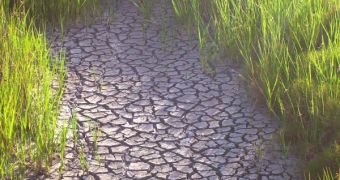Because drought years see less rain, land managers use these times to burn deeper and deeper inside forests, as the trees are very dry and burn more easily, and the danger of the fire being put out by the rain is negligible. But the lack of rain also means that tremendous amounts of carbon dioxide, previously stored inside the vegetation, are now being pumped into the atmosphere, polluting the environment and causing even more drought.
"The link between drought and deforestation is very sensitive. If the climate warms and there are more droughts, it potentially makes the forest and its stored carbon more vulnerable," argues University of California – Irvine (UCI) climate scientist, James Randerson, the co-author of the new study, which was published on-line, December 8th, in the journal Proceedings of the National Academy of Sciences.
He adds that "Deforestation and carbon emissions are substantial and important contributors to the buildup of greenhouse gases in the atmosphere. We should not neglect this flux in developing comprehensive approaches for stabilizing climate. When there is a lot of rainfall, fires don't burn as well, and it is more challenging to remove debris from areas that are being converted to agriculture."
Widespread deforestation is currently a problem in all countries housing portions of the world's rain forests, as farmers and cattle growers burn more and more trees, to make way for pastures and agricultural fields, where they grow various plants. But decreased numbers of trees means that less oxygen is being generated on a planetary scale.
Randerson says that people need to understand that even the smallest number of trees they cut has an influence on the way our environment moves on. Authorities in Asia, as well as in South and Central America, have to take their roles very seriously, so as to prevent further disasters from occurring. If anything, the world's forest will have to be protected and regenerated, and not continuously cut, the study concludes.

 14 DAY TRIAL //
14 DAY TRIAL //